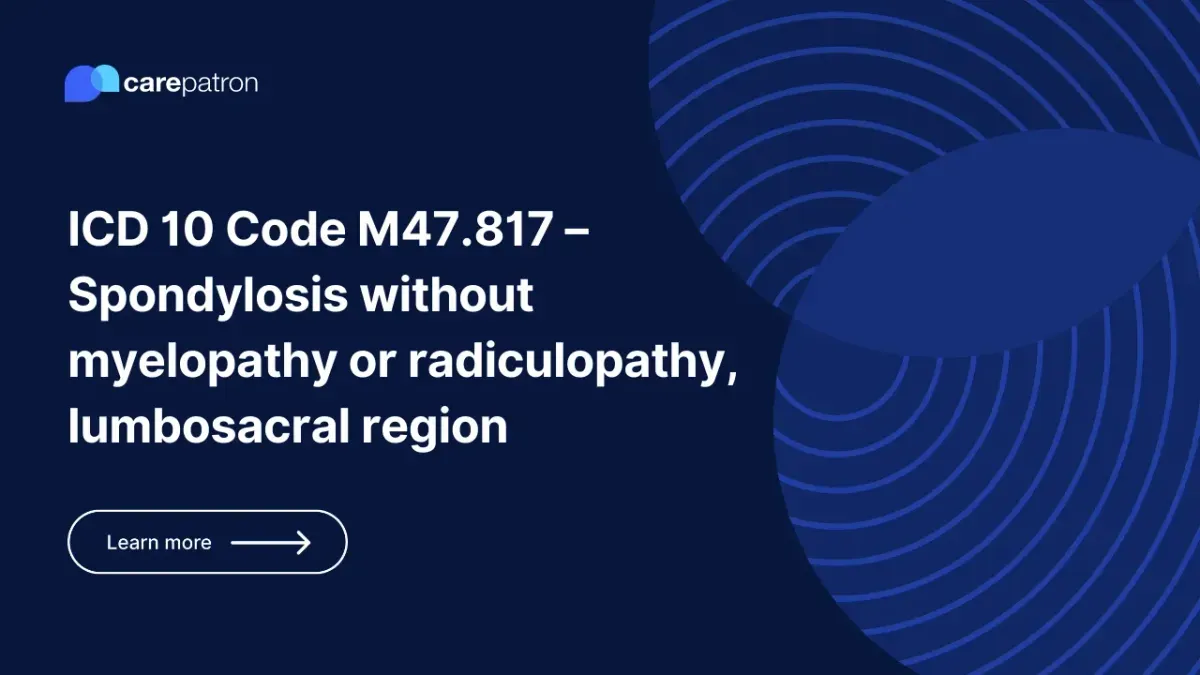
M47.817 – Spondylosis without myelopathy or radiculopathy, lumbosacral region
Learn all about the ICD-10-CM code M47.817 for Spondylosis without myelopathy or radiculopathy, specifically in the lumbosacral region, including what its clinical description is, if it’s billable or not, what its synonyms are, what other ICD codes are related to it, and a few FAQs.
Use Code
EHR and practice management software
Get started for free
*No credit card required
Free
$0/usd
Unlimited clients
Telehealth
1GB of storage
Client portal text
Automated billing and online payments
